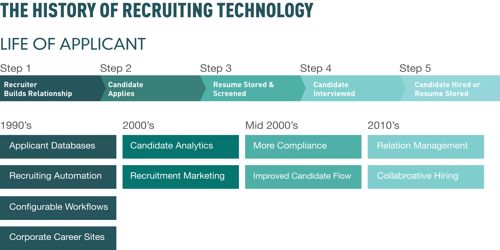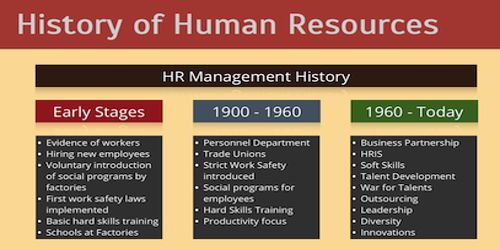Recruitment History
Towards the end of the 1980s recruitment and selection were seen as two of the key issues facing organizations as they prepared for the 1990s. Continuing skills shortages and the prospect of a significant decline in the number of young people would, according to Curnow mean that the recruitment is moving to the top of the personnel professional’s agenda and that the 1990s would be the era of the recruiter. Such would be the difficulties in recruiting and retaining staff, with a shift in power to those with skills to sell, that many organizations would require a radical response. Thus employers would also be compelled to see the attraction and retention of workers as part of the evolving employment relationship, based on a mutual and reciprocal understanding of expectations. Recruitment followed by selection would be vital stages in the formation of such expectations, with an emphasis on a two-way flow of communication. Employees would be selecting an organization and the work on offer as much as employers would be selecting employees. Traditional approaches, that attempt to attract a wide choice of candidates for vacancies before screening out those who do not match the criteria set in job descriptions and personnel specifications would be too one-sided.
For a short time at least, a number of organizations did react to the impending shortages along the lines suggested. Some organizations began to adjust and widen their recruitment criteria in order to increase the number of recruits. However, many of the changes adopted could be seen as tactical adjustments only. By the end of the 1980s, recession had already begun and power in the labor market swung back to employers, except in continuing cases of skills shortages.

In the 1990s there have been wide variations in recruitment and selection practices reflecting an organization’s strategy and its philosophy towards the management of people. Employees may be seen as part of the primary internal market and become the focus for measures intended to bring about increased motivation, increased acceptance of responsibility, deepened skills and greater commitment, providing the organization with a competitive edge. Such employees become part of an organization’s core workforce, and recruitment and selection represent the entry point activities. Seen this way, emphasis may be placed on admitting only those applicants who are likely to behave, acquire skills and show attitudinal commitment in line with the requirements of an organization’s strategy. In many organizations, competency frameworks have been developed and utilize to specify the skills and qualities required from potential employees. Such frameworks have allowed organizations to adopt a range of sophisticated recruitment and selection techniques in order to identify and admit the right people. In this way, as organizationally defined critical qualities, a competency framework augments an organization’s power. Once selected, employees may able to move on to the HRM cycle as part of a progression and development of a career within that organization. In theory, through the use of competencies, employees could be moving round the cycle several times during their working lives and thus subject to recruitment and selection process on more than one occasion in the same organization. More advanced approaches to recruitment and selection are part of a package of HRM activities. As a contrast, approaches to the recruitment and selection of employees forming the secondary internal market would include less screening at the point of entry, with attention paid mainly to possession of the skills required such employees might be recruited and selected by cheaper methods but still perhaps with a connection to organization strategy via the specification of competencies.
Variations in practice, however, are bound by the law of the land. Recruitment and selection have been notorious areas for prejudice and subjective influence and this could well result in infringements under legislation dealing with discrimination. In the UK the key legal provisions are contained in the sex discriminations at 1975, and the Race relations at 1976. Both acts disallow discrimination and in general there are two forms of discrimination which are against the law:
Unscientific and Scientific recruitment
Previously, the selection of candidates was influenced by superstitions, beliefs, personal prejudices of managers looking after the recruitment and selection of the staff.
The net result of such unscientific recruitment and selection are:
- Low productivity of labor
- High turnover
- Excessive wastage of raw materials
- More accidents and corresponding loss to the organization
- Inefficient working of the whole organization and finally
- Ineffective executive of training and management development programs
Scientific Recruitment and Selection
The importance of selection recruitment and selection of staff is now accepted in the business world. Selection is important as it has its impact on work performance and employee cost. As result scientific methods of recruitment and selection are extensively for the selection of managers and the supervisory staff. The assistance of experts such as industrial psychologist and management consultants are also taken for the purpose of scientific selection. As a result, the objective of “right man for the right job” is achieved in many organizations. Moreover, “right job” is the basic principle in manpower procurement.
Meaning of Recruitment
Recruitment means to estimate the available vacancies and to make suitable arrangements for their selection and appointment. Recruitment is understood as the process of searching for and obtaining applicants for the jobs, from among whom the right people can be selected.
A formal definition states, “It is the process of finding and attracting capable applicants for the employment. The process begins when new recruits are sought and ends when their applicants are submitted. The result is a pool of applicants from which new employees are selected”. In this, the available vacancies are given wide publicity and suitable candidates are encouraged to submit applications so as to have a pool of eligible candidates for scientific selection.
In recruitment, information is collected from interested candidates. For this different source such as newspaper advertisement, employment exchanges, internal promotion, etc. are used.
In the recruitment, a pool of eligible and interested candidates is created for selection of most suitable candidates. Recruitment represents the first contact that a company makes with potential employees.
According to Edwin B. Flippo, “Recruitment is the process of searching the candidates for employment and stimulating them to apply for jobs in the organization”. Recruitment is the activity that links the employers and the job seekers. A few definitions of recruitment are:
- A process of finding and attracting capable applicants for employment. The process begins when new recruits are sought and ends when their applications are submitted. The result is a pool of applications from which new employees are selected.
- It is the process to discover sources of manpower to meet the requirement of staffing schedule and to employ effective measures for attracting that manpower in adequate numbers to facilitate effective selection of an efficient working force.
Recruitment is a continuous process whereby the firm attempts to develop a pool of qualified applicants for the future human resources needs even though specific vacancies do not exist. Usually, the recruitment process starts when a manger initiates an employee requisition for a specific vacancy or an anticipated vacancy.
Purpose of Recruitment
- Determine the present and future requirements of the organization on conjunction with its personnel-planning and job analysis activities.
- Increase the pool of job candidates at minimum cost.
- Help increase the success rate of the selection process by reducing the number of visibly under qualified or overqualified job applicants.
- Help reduce the probability that job applicants, once recruited and selected, will leave the organization only after a short period of time.
- Meet the organization’s legal and social obligations regarding the composition of its work force.
- Begin identifying and preparing potential job applicants who will be appropriate candidates.
- Increase organizational and individual effectiveness in the short term and long term.
- Evaluate the effectiveness of various recruiting techniques and sources for all types of job applicants.
Recruitment is a positive function in which publicity is given to the jobs available in the organization and interested candidates are encouraged to submit applications for the purpose of selection.
Recruitment represents the first contact that a company makes with potential employees. It is through recruitment that many individuals will come to know a company, and eventually decided whether they wish to work for it. A well-planned and well-managed recruiting effort will result in high quality applicants, whereas, a haphazard and piecemeal efforts will result in mediocre ones.
Information Source:
















